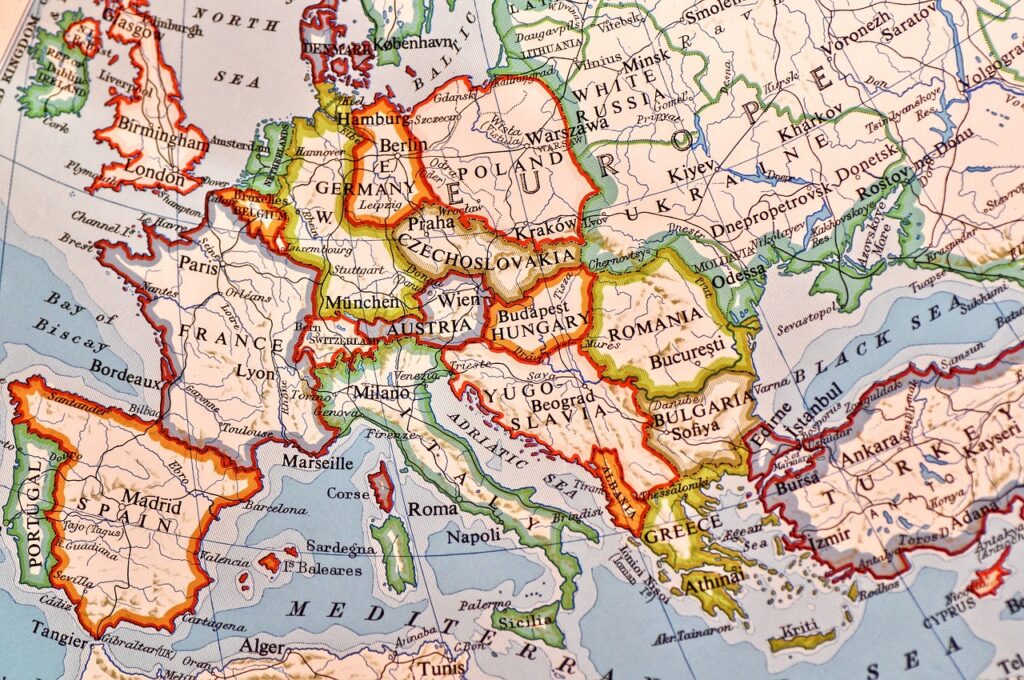10 Practical Tips for Booking Cheap Flights to Scandinavia
Traveling to Scandinavia can be expensive for various reasons. However, one thing you shouldn’t worry about is the cost of flights. In fact, by following some basic rules, you can book affordable flights to all Scandinavian countries without any hassle. In this article, we’ll share ten simple and practical tips to help you find cheap flights to Scandinavia and save a big chunk of your travel budget. Ten tips on getting cheap flights to Scandinavia Plan ahead and get your tickets early It may seem like an obvious suggestion, but surprisingly, many people overlook it. Some might believe booking your tickets early doesn’t make a significant difference, but that’s not true. Scandinavia is a destination for numerous budget airlines, which tend to fill quickly. By booking your flight in advance, you can get your tickets at half the price or even cheaper, compared to booking just a few weeks before your trip. Now, you might wonder, when exactly is “early”? Based on our experience, the sweet spot for securing the cheapest flights to Scandinavian countries is around 4-5 months before your planned departure. Getting your ticket earlier than that won’t really change the price. Book your tickets from online platforms and flight search engines When it comes to flying affordably to Scandinavia, it’s best to avoid booking solely through the airlines’ websites. Instead, opt for flight search engines like Kiwi, Skyscanner, or Google Flights. By doing so, you can find better prices and have the advantage of comparing different options. In the worst-case scenario, the price might be the same. But at least you have the convenience of exploring multiple choices. For example, let’s consider a ticket price from Amsterdam to Stockholm. On an airline website, the best price for a round-trip ticket in November 2023 is $190, while on a flight search engine, you can find the same ticket for $140 or even less. Utilizing online platforms and flight search engines can save you a lot from your flight expenses. Find the cheapest flights to Scandinavia here: Use a transit flight to reach your final destination A transit flight involves a stop or connection in another city before reaching your final destination. This approach is the most cost-effective way to travel to most Scandinavian destinations. Whether you’re flying from a nearby location or a far-off place, transit flights are consistently cheaper than direct flights, particularly when heading to countries such as Iceland, Greenland, and Finland. This strategy also applies to cities like Bergen, Gothenburg, or Stavanger. While there might be occasions where you experience a longer wait time during the layover, the potential savings are well worth it. For example, a direct flight from New York to Reykjavik could cost around $800. But by opting for a transit flight with a layover in another European city, you might find prices as low as $500 or less. Go light with just one carry-on suitcase Always consider going light and traveling with just one carry-on suitcase, especially if you’re planning a short visit to Scandinavia. Bringing excessive luggage can add unnecessary costs to your trip. With a single carry-on, you can save money on checked baggage fees. For a weekend trip to cities like Copenhagen, Oslo, or Stockholm, checked baggage is certainly not required. For instance, let’s take the example of a SAS Airlines ticket. Without checked baggage, the ticket cost for a round trip from London to Copenhagen is around $50. However, if you add checked baggage to the booking, the price can increase by $75 or more. So, traveling with just one carry-on suitcase will definitely help you cut down on expenses and make your journey more economical. Use a VPN to change your location to find cheap flights to Scandinavia This simple trick can help you reduce costs significantly. When you browse flight options, airlines, and travel websites often customize their prices based on your location and browsing history. By using a VPN to appear as if you’re browsing from a different location, you can access lower fares offered to residents of that specific region. For instance, let’s consider booking a flight from Paris to Oslo. Without a VPN, the ticket price might be $120. However, by using a VPN to make it appear as if you’re browsing from Norway, the same flight could be available for $80 or even less. So, using a VPN can lead to substantial savings on your flight bookings, allowing you to travel more affordably. Consider booking off-season flights to Scandinavia Scandinavia is a beautiful destination in all seasons. However, it does experience periods of higher tourist activity known as the peak season, and quieter periods called the off-season. The off-season period in Scandinavia typically falls from November to March, excluding major holidays. During this time, flights to Scandinavia are cheaper due to lower demand. Airlines often offer discounted fares to attract more travelers during the off-season. By opting for off-season flights, which include the winter months, you can take advantage of these reduced prices and enjoy the same wonderful Scandinavian experience while saving money on your airfare. Book your departure and return flights on a weekday Consider booking your departure and return flights to Scandinavia on weekdays to maximize savings. Studies have revealed that flying between Monday and Wednesday can potentially save you up to 15% compared to flying on other days of the week. This rule holds for flights to Scandinavia as well. It’s easy to verify this yourself with a simple search. By minimizing your flight options to weekdays, you will always find lower fares and take advantage of the cost savings. So, when planning your trip, don’t forget that choosing weekdays for your departure and return flights can be a straightforward way to limit your expenses and make your journey to Scandinavia more budget-friendly. Book cheap flights to Scandinavia with cashback To secure cheap flights to Scandinavia, consider booking through WayAway. WayAway is a platform that not only offers the cheapest flight tickets to every part of Scandinavia,
10 Practical Tips for Booking Cheap Flights to Scandinavia Read More »









